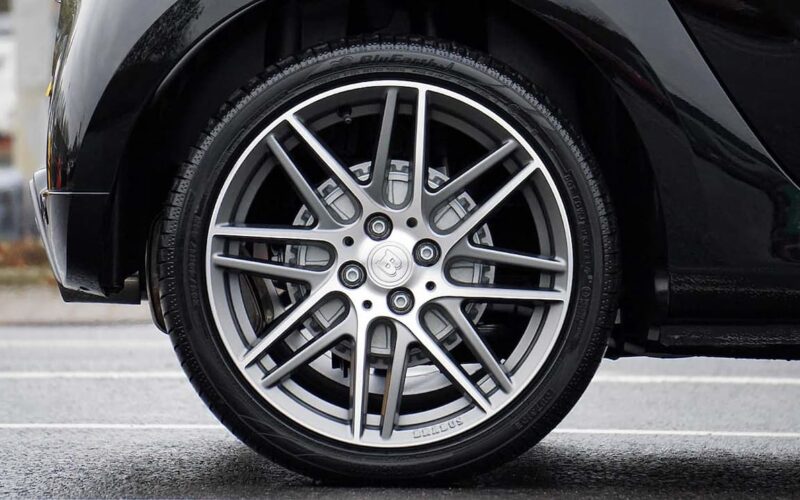Taking care of your vehicle involves more than just getting oil changes and tune-ups. You also need to pay attention to the maintenance of the tires. Tire rotation is one important part of this maintenance, as it helps ensure the performance and longevity of your tires. In this article, we’ll discuss tire rotation, why it’s important, how often you should rotate your tires, and a few tips for extending the life of your tires.
What is Tire Rotation?
Tire rotation is a process where you switch the positions of all four tires on your vehicle in order to even out wear and tear on each tire. This helps maintain optimal performance from your vehicle by preventing uneven tread wear on individual tires. It also helps extend the life of each tire, so you don’t have to buy new ones as often.

Why Is Tire Rotation Important?
Uneven tread wear can cause problems such as reduced traction in wet or icy conditions due to inadequate tread depth in some areas, unpredictable handling due to an uneven surface contact with the road, and vibrations caused by an imbalance in wheel weight distribution due to worn spots. Rotating your tires regularly allows you to keep an eye on wear patterns and address any problems with the tires before they become serious. Also read what size is a 35 inch tire.
How Often Should You Rotate Your Tires?
It’s recommended that you rotate your tires every 5,000 to 8,000 miles, or every six months. This interval will vary depending on your car’s make and model, so it’s best to consult your owner’s manual or a professional mechanic for specific instructions. The general idea is that rotating your tires more often than recommended helps you get the most out of them in terms of performance and longevity.
Do All Cars Need Tire Rotation?
Most vehicles will benefit from regular tire rotation. However, if you drive a front-wheel drive vehicle, then it is especially important for you to rotate your tires regularly in order to keep them in good condition and maintain optimal performance. Additionally, all-wheel drive vehicles often require a different type of rotation pattern than standard front-wheel drive cars since their wheels are subject to different amounts of force when accelerating and cornering. Therefore, it’s important to consult with an automotive professional before attempting any type of tire rotation on an all-wheel drive vehicle.
Tire Rotation Patterns
The main types of tire rotation patterns are the X-pattern and the Forward Cross-pattern. In an X-pattern, the front left tire is moved to the back right position, followed by the front right tire moving to the back left position. Then, both rear tires move forward on their respective sides. In a Forward Cross-pattern, all four tires are moved in a forward cross pattern (e.g. left-front tire moves to right-rear position) with no swapping between sides and no diagonal movements.

Tips For Extending The Life Of Your Tires
In addition to regular rotations, here are a few tips to help maximize the life of your tires:
• Maintain the recommended air pressure. Under-inflated tires can lead to increased wear and tear.
• Avoid sudden acceleration and braking. Doing so can cause premature wear on the tire treads.
• Drive at a moderate speed. Speeding can cause increased heat in the tires, which leads to greater wear and tear.
Signs It’s Time to Rotate
If you’ve been following a regular rotation schedule but want an extra checkup on how your car is holding up, there are some signs that suggest it may be time to rotate again regardless of mileage or time:
• Uneven wear on individual treads – If you notice one side is wearing more than the other, it’s time to rotate.
• Vibration or shaking while driving – If your car starts to shake or vibrate while driving, it could be a sign of unevenly worn tires and means that you should have them rotated.
• Unusual tire noise – If you start to hear an unusual noise coming from your tires, it could be a sign of uneven wear and is another indication that you should rotate them as soon as possible. How to rotate your tires read here.
Conclusion
Tire rotation is an important part of vehicle maintenance that should not be overlooked. It helps prevent uneven tread wear, improves performance, and extends the life of your tires. Rotate your tires every 5,000 to 8,000 miles or once every six months for best results, depending on your car’s specific needs – consult your owner’s manual or a professional mechanic if you’re not sure how often you should be rotating them. Additionally, there are several signs you can look out for which may indicate it’s time for a rotation regardless of mileage or time. For the best result use some basic driving techniques and keep an eye on your tire pressure to further extend their life.
